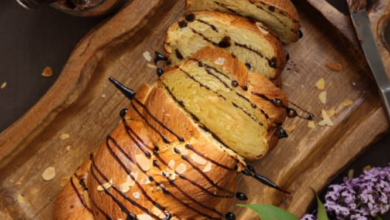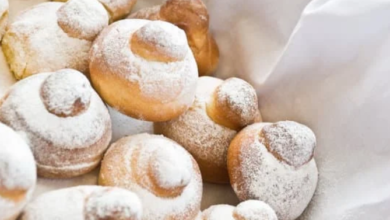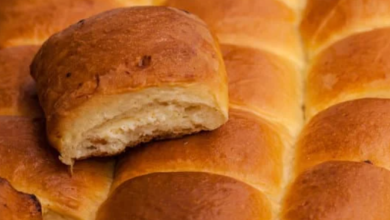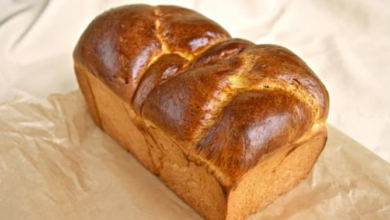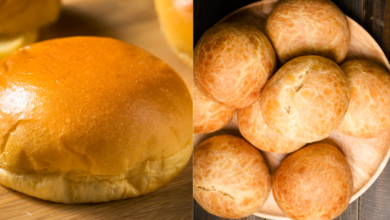What’s the Point of Adding Butter to Brioche?

What To Know
- The high fat content of butter creates a barrier that traps moisture within the bread, resulting in a longer shelf life and a consistently soft texture.
- When the bread is baked, the butter on the surface melts and browns, creating a tantalizing crust that is both visually appealing and packed with flavor.
- As the bread rises during the proving process, the butter acts as a lubricant, allowing the dough to expand and create those coveted air pockets that give brioche its distinctive lightness.
Brioche, a delectable French bread known for its golden-brown crust and fluffy, buttery interior, owes its exceptional qualities to the generous amount of butter it contains. But what exactly does butter do in brioche, and how does it contribute to this beloved bread’s unique characteristics? Embark on a culinary journey as we delve into the transformative role of butter in the making of brioche.
The Tenderizing Touch
Butter acts as a tenderizer in brioche, ensuring its signature soft and pillowy texture. The fat molecules in butter coat the gluten strands in the dough, preventing them from forming a tight network. This results in a less chewy and more tender bread that melts in your mouth with each bite.
The Flavor Enhancer
Butter is a culinary goldmine of flavor, and in brioche, it plays a crucial role in enhancing its taste. The rich, creamy notes of butter permeate the bread, adding a depth of flavor that is both sophisticated and indulgent.
The Moisture Keeper
Butter acts as a moisture keeper in brioche, preventing it from drying out prematurely. The high fat content of butter creates a barrier that traps moisture within the bread, resulting in a longer shelf life and a consistently soft texture.
The Golden Glow
The golden-brown crust of brioche is a testament to the caramelizing effects of butter. When the bread is baked, the butter on the surface melts and browns, creating a tantalizing crust that is both visually appealing and packed with flavor.
The Airy Lift
Butter contributes to the airy, cloud-like texture of brioche. As the bread rises during the proving process, the butter acts as a lubricant, allowing the dough to expand and create those coveted air pockets that give brioche its distinctive lightness.
The Richness Factor
The generous amount of butter in brioche adds a luxurious richness that is simply irresistible. Each bite is a symphony of flavors and textures, leaving a lasting impression on your taste buds.
The Versatility of Brioche
One of the remarkable qualities of brioche is its versatility. It can be enjoyed on its own as a breakfast treat or as a side dish to accompany your favorite meals. Brioche also serves as an exceptional base for sandwiches, French toast, and other culinary creations.
The Bottom Line: The Indispensable Ingredient
Butter is the indispensable ingredient that transforms ordinary bread into the extraordinary brioche. It tenderizes, flavors, moistens, browns, lightens, enriches, and adds versatility to this culinary masterpiece. Without butter, brioche would lose its signature characteristics and fail to captivate the hearts and taste buds of bread enthusiasts worldwide.
Questions You May Have
1. Why is my brioche too dense?
- Possible reasons include not kneading the dough enough, adding too much flour, or not allowing it to rise for long enough.
2. How can I prevent my brioche from drying out?
- Store it in an airtight container and wrap it in plastic wrap to prevent moisture loss.
3. Can I use margarine instead of butter in brioche?
- Margarine can be used as a substitute, but it may alter the flavor and texture of the bread slightly.
4. How long should I knead brioche dough?
- Knead the dough for at least 10-15 minutes, or until it becomes smooth and elastic.
5. Can I make brioche without a stand mixer?
- Yes, you can make brioche by hand, but it will require more time and effort.
6. What is the ideal temperature for proving brioche?
- The ideal temperature for proving brioche is around 75-85°F (24-29°C).
7. How do I know when my brioche is done baking?
- Insert a toothpick or skewer into the center of the bread. If it comes out clean, the brioche is done.
8. Can I freeze brioche?
- Yes, brioche can be frozen for up to 3 months. Thaw it at room temperature before serving.
9. What are some popular fillings for brioche?
- Popular fillings include chocolate, fruit, cheese, and savory ingredients like bacon or ham.
10. How can I make my brioche crust even more golden brown?
- Brush the top of the bread with an egg wash before baking for a richer color.
